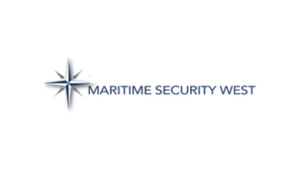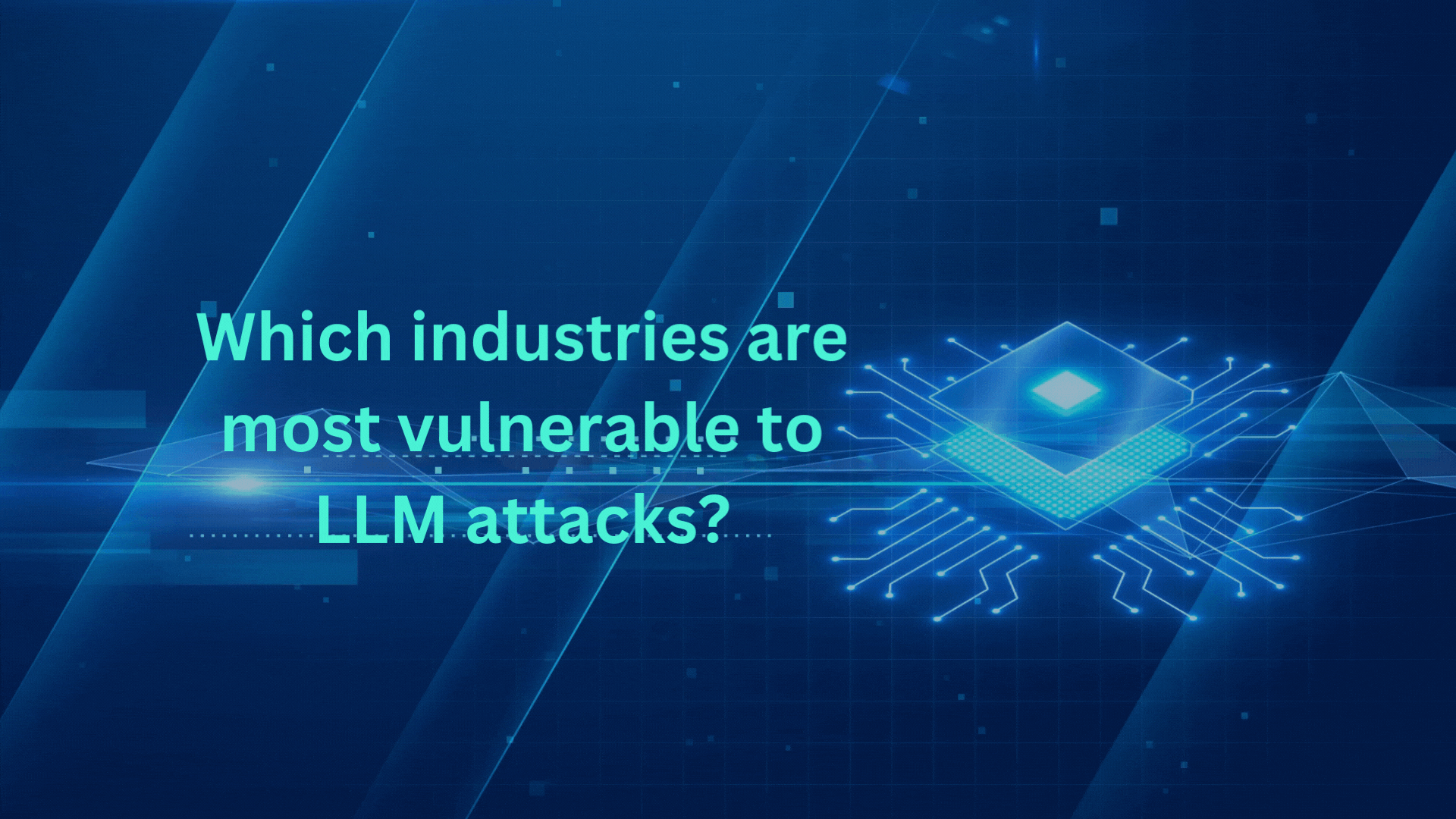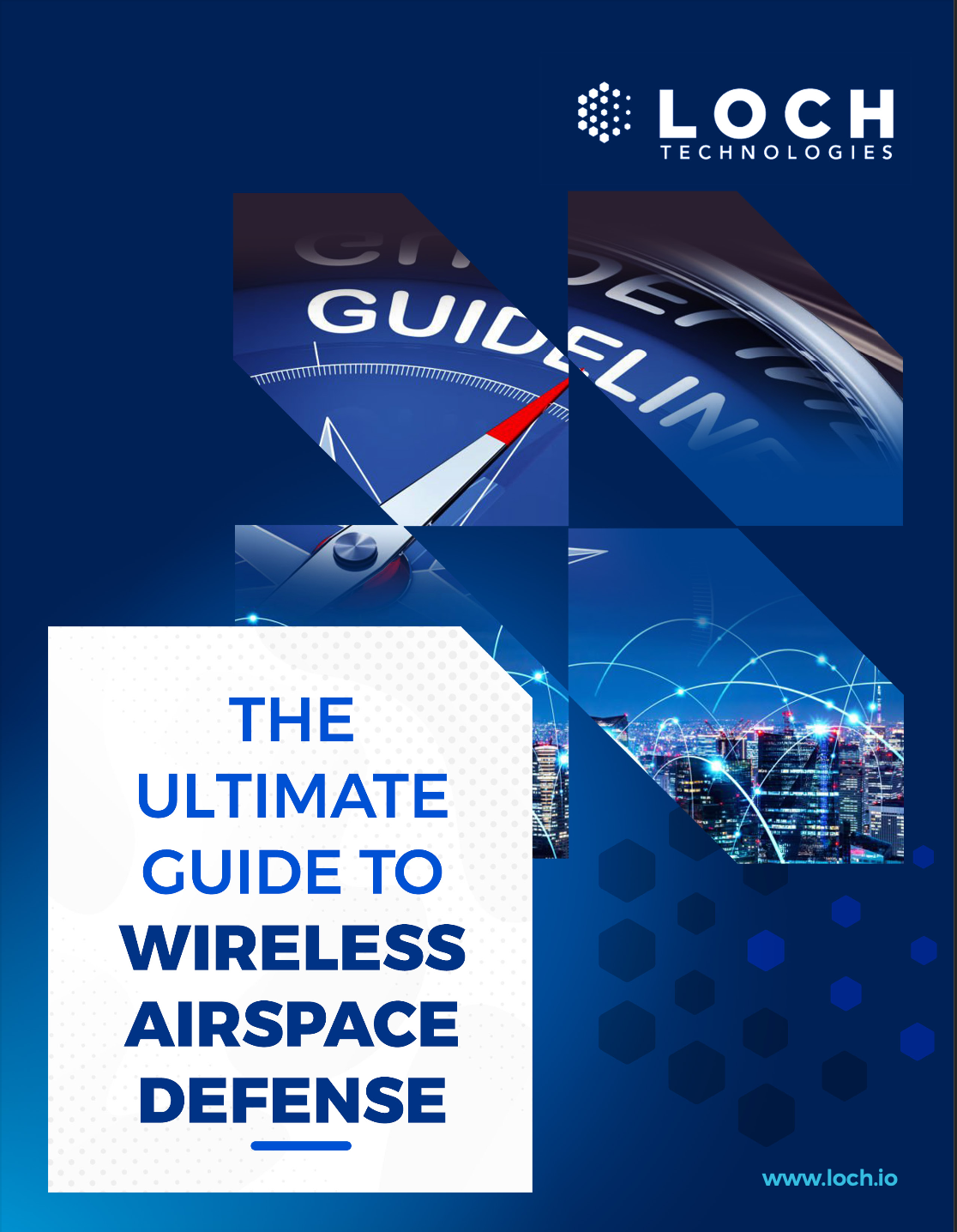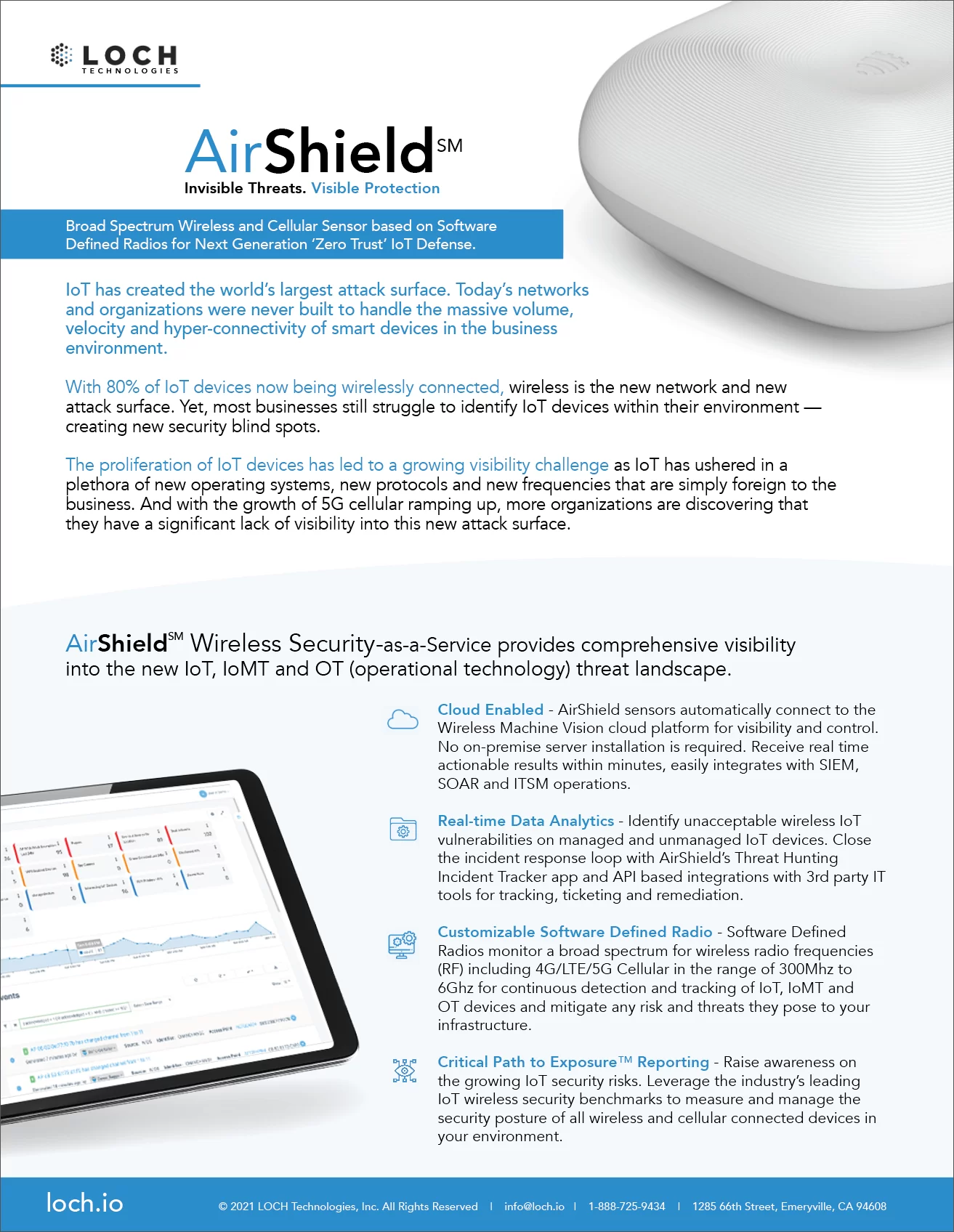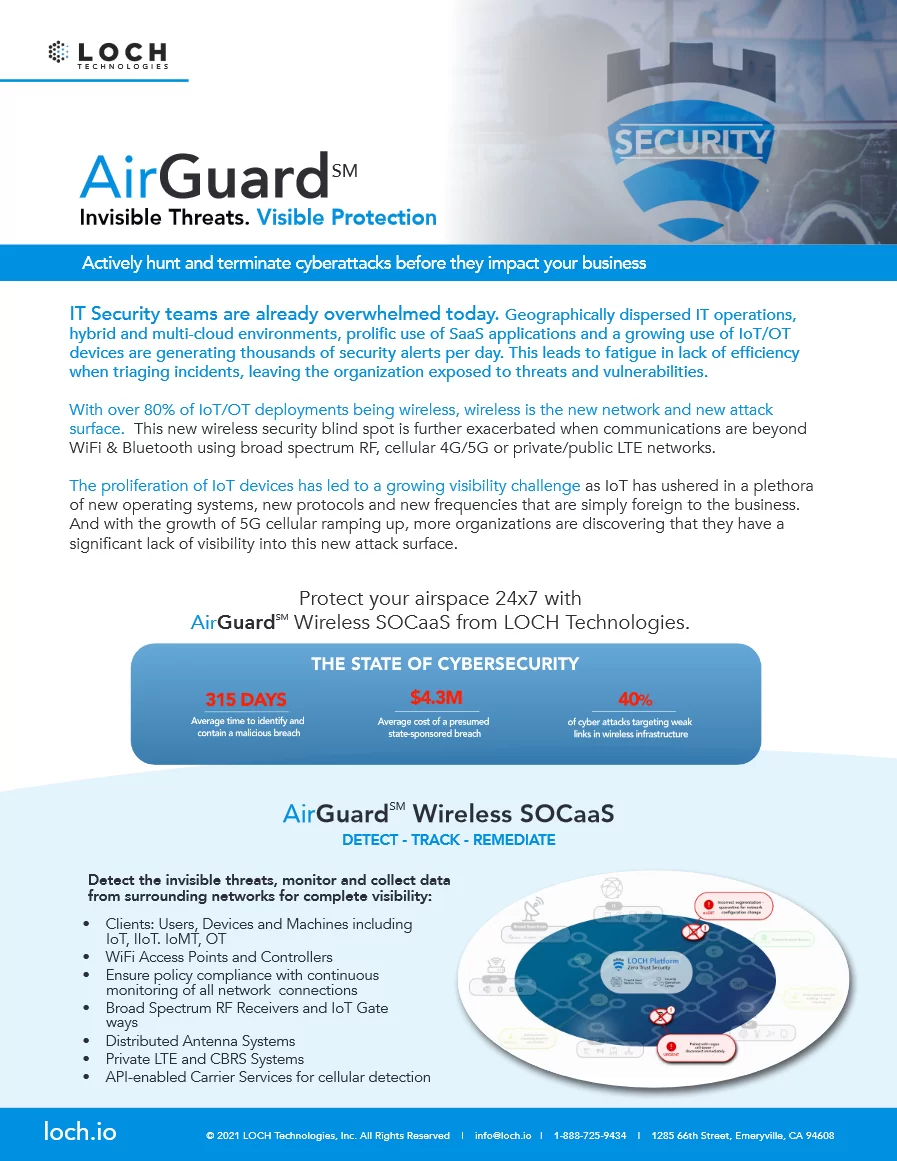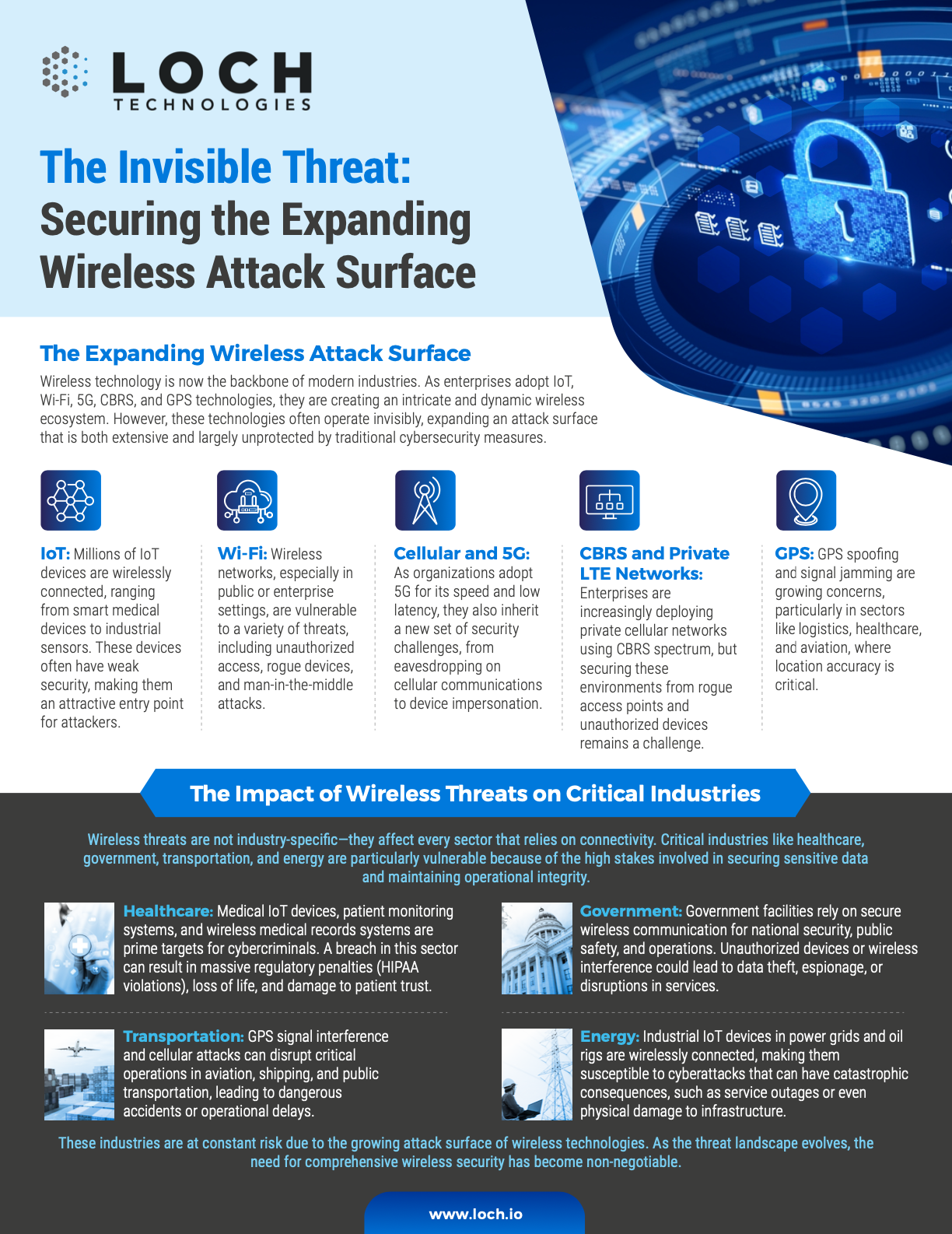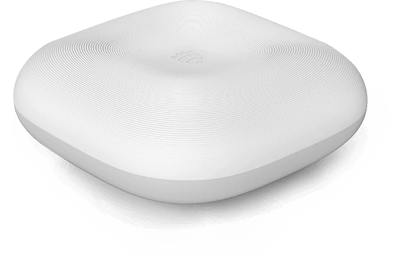
"Invisible" threats in utility organizations may include digital attacks, insider threats, and other subtle forms of disruption that are not immediately obvious or detectable.
AirShield Wireless Airspace Defense is an intelligent, proactive solution to protect mission-critical wireless networks.
It's a comprehensive security platform that intelligently utilizes state-of-the-art software-defined radios to detect and respond to threats that could compromise wireless signals across critical infrastructure, especially utility environments.
With this defense system, you can rely on the AirShield wireless security platform to constantly monitor and protect wireless networks from malicious or unauthorized activities.
Through patented AI wireless machine vision, the AirShield wireless airspace defense system will protect and secure mission-critical applications like GPS, Cellular/CBRS, broad-spectrum RF/Wireless, and Wi-Fi from emerging new threats.
Cybersecurity Vulnerabilities of Wireless Utility Systems
Unauthorized Access & Hacking
Cybercriminals can exploit vulnerabilities in wireless networks to gain unauthorized access to control systems, SCADA (Supervisory Control and Data Acquisition) systems, and other critical infrastructure.
Denial of Service (DoS) Attacks
Attackers can launch DoS attacks to disrupt communication and control systems, leading to service outages and operational disruptions.
Spoofing & Jamming
Spoofing signals or jamming communication frequencies can interfere with the operation of smart grids, automated meter reading systems, and other wireless-dependent technologies.
Data Interception & Eavesdropping
Unencrypted wireless communications can be intercepted, leading to the exposure of sensitive data such as operational information, customer data, and control commands.
Ransomware & Malware
Wireless networks can serve as entry points for ransomware and other malware, potentially compromising critical systems and demanding ransom for restoration.
Physical Attacks on Wireless Infrastructure
Physical attacks on wireless communication towers and equipment can lead to service disruptions and increased repair costs.

Join Us at the Security & Policing Home Office Event – Farnborough, UK, March 11th - 13th, 2025
Read More
Creating the Next Frontier in Wireless Technology: The Critical Need for Wireless Airspace Defense
Read More
The Silent Threat of Rogue Wi-Fi Networks on Navy Ships – How LOCH's AirShield Could Have Prevented a Security Breach
Read MoreThe Looming Threat:
How Wireless Hacking Could Disrupt Utility Business Operations
Service Disruptions
Wireless threats can cause significant disruptions in the delivery of utility services, leading to outages and reduced reliability.
Safety Risks
Compromised control systems can pose safety risks to both personnel and the public, particularly in the case of critical infrastructure like power grids and water supply systems.
Reputation Damage
Breaches and service disruptions can damage the reputation of utility organizations, leading to a loss of customer trust and confidence.
Financial Losses
The costs associated with recovery, legal liabilities, and compensation for affected customers can be substantial.
Regulatory Penalties
Non-compliance with cybersecurity regulations can result in fines and other penalties from regulatory bodies.
Operational Inefficiencies
Disruptions and the need for emergency response can divert resources away from normal operations, reducing overall efficiency and productivity.
It's crucial to take proactive measures to ensure the safety and security of utility business operations to prevent potential cyber-attacks and keep the utility infrastructure safe and secure.
Safeguarding Critical Utility Infrastructure:
How LOCH Wireless Airspace Defense Can Help
Comprehensive Wireless Monitoring
LOCH's AirShield solutions continuously monitor the wireless airspace for unauthorized devices, rogue access points, and potential threats, providing real-time visibility into the wireless environment.
AI-Enabled Threat Detection and Alerts
Advanced analytics and machine learning algorithms detect anomalies and potential threats, triggering immediate alerts for further investigation.
Risk Assessment
The platform assesses the severity and potential impact of detected threats, allowing for prioritization and appropriate response actions.
Preventative Measures
Incident Response & Mitigation
LOCH AirShield provides tools for rapid incident response, including isolation of compromised devices, blocking unauthorized access points, and deploying countermeasures to neutralize threats.
Compliance and Reporting
The platform helps to ensure compliance with industry
standards and regulations by providing detailed reports and audit trails of wireless security activities.
Integration with Existing Security Systems
LOCH's AirShield solutions can integrate with existing security systems and protocols, enhancing the overall security posture without requiring significant changes to the current infrastructure.
By leveraging LOCH Wireless Airspace Defense, utility organizations can enhance their wireless security, reduce the risk of cyber threats, and ensure the reliability and safety of their operations. This proactive approach to wireless security helps maintain the continuity of critical services and protects both the infrastructure and the customers who rely on it.
Why You Need Wireless Airspace Defense
Increased Wireless Threats
With more IoT devices and wireless communication protocols, ports and facilities are increasingly vulnerable to interception, signal jamming, and unauthorized access.
Blind Spots in Traditional Security
Conventional firewalls and network security tools often miss threats in wireless signals outside their detection scope, leaving the airspace around an organization vulnerable.
Data Integrity and Privacy
Protects sensitive data by ensuring unauthorized devices cannot connect to or intercept communications over wireless networks.
Operational Continuity
Minimizes disruptions to critical operations caused by interference or attacks, ensuring systems remain operational.
Compliance and Safety
Helps organizations meet security standards and guidelines, which are particularly important in critical infrastructure sectors.
- - Detect, identify and classify all broad spectrum RF emitting devices in range
- - Device and network pairing communication map analysis and correlation
- - Risk assessment threat ranking for Zero Trust network access control
- - Mobile App for hunting rogues even if mobile
- - Wireless deep packet inspection
- - Behavioral baselining, analysis and anomaly detection/alerts
- - DVR-like capabilities for forensics, including geo-positioning
- - Carrier integration with cell. devices for anomaly detection, fraud/theft and cost management
- - List and map devices on dashboard or into SIEMs.
- - Interact with MDM and EMM assets for correlation and feedback on exceptions
- - Rectify network segmentation via interactions with SOAR, FW and/or NAC systems
- - Automate response and closure via collaboration with ITSM/ITSL and CMDBs




